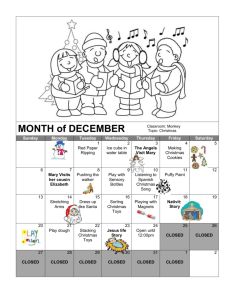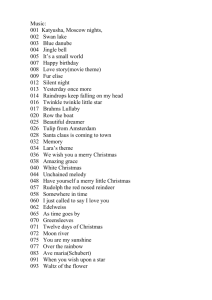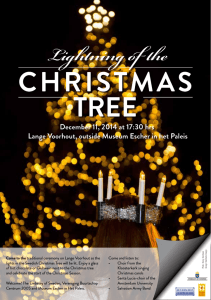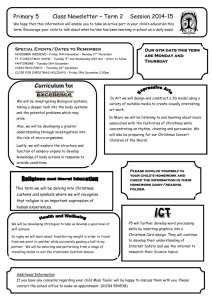Lesson Plan
advertisement
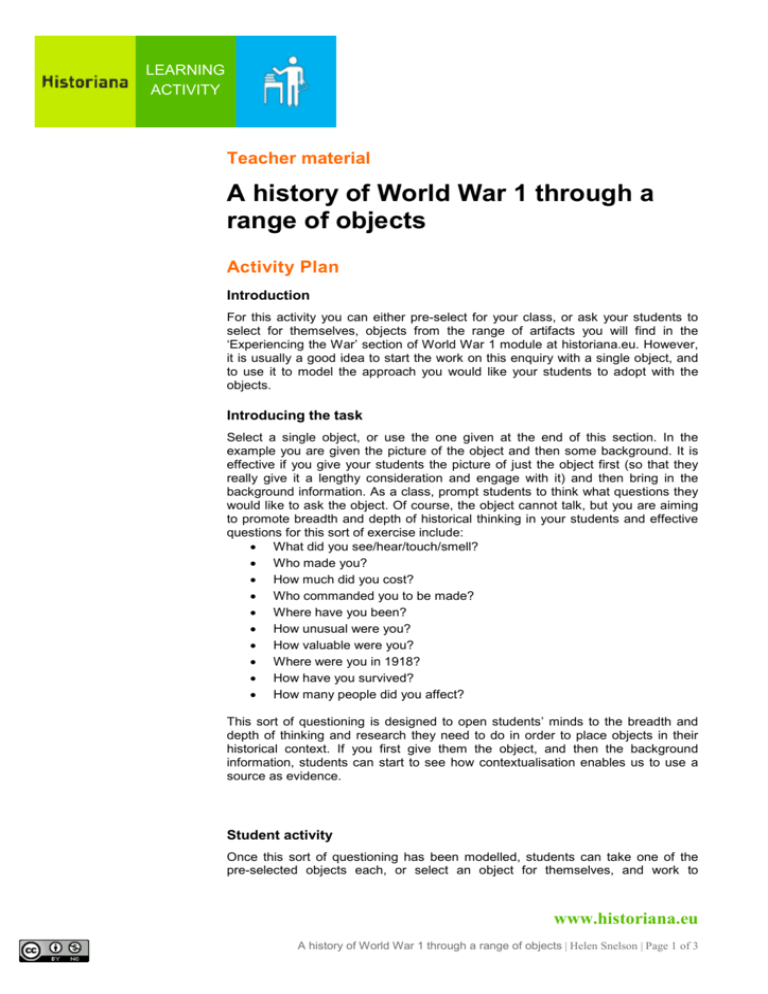
LEARNING ACTIVITY Teacher material A history of World War 1 through a range of objects Activity Plan Introduction For this activity you can either pre-select for your class, or ask your students to select for themselves, objects from the range of artifacts you will find in the ‘Experiencing the War’ section of World War 1 module at historiana.eu. However, it is usually a good idea to start the work on this enquiry with a single object, and to use it to model the approach you would like your students to adopt with the objects. Introducing the task Select a single object, or use the one given at the end of this section. In the example you are given the picture of the object and then some background. It is effective if you give your students the picture of just the object first (so that they really give it a lengthy consideration and engage with it) and then bring in the background information. As a class, prompt students to think what questions they would like to ask the object. Of course, the object cannot talk, but you are aiming to promote breadth and depth of historical thinking in your students and effective questions for this sort of exercise include: What did you see/hear/touch/smell? Who made you? How much did you cost? Who commanded you to be made? Where have you been? How unusual were you? How valuable were you? Where were you in 1918? How have you survived? How many people did you affect? This sort of questioning is designed to open students’ minds to the breadth and depth of thinking and research they need to do in order to place objects in their historical context. If you first give them the object, and then the background information, students can start to see how contextualisation enables us to use a source as evidence. Student activity Once this sort of questioning has been modelled, students can take one of the pre-selected objects each, or select an object for themselves, and work to www.historiana.eu A history of World War 1 through a range of objects | Helen Snelson | Page 1 of 3 LEARNING ACTIVITY contextualise it. Working on their own, or in pairs, they research the context to their object in order to answer the overall question: ‘What can this object reveal about the experience of World War 1?’ If your students are less able and/or younger, you may need to scaffold the research process for them by providing them with material. Each student (or pair) should produce a piece of writing that answers the question. Pictures of each object can then be displayed alongside the written contextualisation, either on the classroom wall or online. Many teachers will want to undertake a peer review process at this point. Students can read the texts and use post-its/the comment function to leave constructive comments and questions. Individuals can then use these to improve their work. Class discussion and reflective thinking Once the written work about each object is completed, the class can discuss what the objects as a collection reveal about experiencing World War 1. They can draw out general themes and write up an introduction to their exhibition. A useful question here is: ‘What will a visitor to your exhibition have learnt about the topic ‘experiencing the war’ by the time they get to the end of their visit?’ In order to draw the students’ attention to the historical processes at work, the teacher should ask how a visitor to their exhibition would walk away with a different interpretation if one or two of the objects were removed, or substituted for others. These questions can be made more specific. For example, ‘how would you alter your exhibition if it was not for a local or national, but for an international museum?’ The aim here is to reinforce the idea that history is about selecting from the past to construct evidence-based interpretations that are contestable and variable. A historian, rather like a museum curator, alters the narrative by the way they select and display the evidence. An object that could be used for the first part of the activity Brass tobacco box, given by Princess Mary to British troops Princess Mary, daughter of King George V and Queen Mary, created the 'Sailors & Soldiers Christmas Fund', and in the autumn of 1914 the public was asked to contribute. The idea was that all British troops would get a Christmas ‘gift from the nation’. This included Empire troops, such as the Indian army. The fund was very popular and it was decided to make brass tins, which could then be filled with items for smokers, or sweets for non-smokers. A Christmas card and a picture of the princess were also included. The troops were wished a 'victorious new year'. www.historiana.eu A history of World War 1 through a range of objects | Helen Snelson | Page 2 of 3 LEARNING ACTIVITY Wounded people, nurses and widows or parents of the dead also received the gift. Over 355,000 were delivered in time for Christmas, but the last delivery was reported in the summer of 1916. The fund continued until 1920, by which time nearly £200,000 had been given. Sources: 1. Object from a collection of artefacts made by Dr W.R. Blore M.C. RAMC from his time serving as a doctor at Suvla Bay, Gallipoli, and on the Western Front. Contributed to www.europeana1914-1918.eu by Alun Edwards and David Blore. 2. ‘A History of the World in 100 Objects’, by Neil MacGrgor. Penguin, 2012 (quote from p.xvi). www.historiana.eu A history of World War 1 through a range of objects | Helen Snelson | Page 3 of 3

